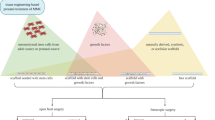Abstract
Progressive neurological deterioration may occur after meningomyelocele repair. Magnetic resonance imaging almost invariably demonstrates a conus medullaris in an abnormally low position, whether neurological symptoms develop or not. Surgery of a secondary tethered cord is indicated when progression of neurological symptoms is documented. We performed a longitudinal study of posterior tibial nerve somatosensory evoked potentials (SSEPs) in children and adolescents after neonatal meningomyelocele repair. All patients were able to walk. Declining or negative posterior tibial nerve SSEPs were recorded in 15 patients; 14 of these had clinical signs of a secondary tethered cord. After surgery of the tethered cord, the SSEPs improved in 8 of 10 patients. Posterior tibial nerve SSEPs may contribute to the diagnosis of secondary tethered cord. After untethering, the evoked potentials demonstrate recovery of spinal cord function and might help to delineate prognosis.
Similar content being viewed by others
References
Begeer JH, Meihuizen de Regt MJ, HogenEsch I, Ter Weeme CA, Mooij JJA, Vencken LM (1986) Progressive neurological deficit in children with spina bifida aperta. Z Kinderchir 41 [Suppl I]:13–15
Cracco JB, Cracco RQ (1979) Somatosensory spinal and cerebral evoked potentials in children with occult spinal dysraphism (abstract). Neurology 29:543
Cracco JC, Cracco RQ, Graziani L (1974) Spinal evoked response in infants with myelodysplasia (abstract). Neurology 24:359
Duckworth T, Yamashita T, Franks CI, Brown BH (1976) Somatosensory evoked cortical responses in children with spina bifida. Dev Med Child Neurol 18:19–24
Heinz ER, Rosenbaum AE, Scarff TB, Reigel DH, Drayer BP (1979) Tethered spinal cord following meningomyelocele repair. Radiology 131:153–160
Just M, Schwarz M, Ludwig B, Ermert J, Thelen M (1990) Cerebral and spinal MR findings in patients with postrepair myelomeningocele. Pediatr Radiol 20:262–266
Oi S, Yamada H, Matsumoto S (1990) Tethered cord syndrome versus low-placed conus medullaris in an over-distended spinal cord following initial repair for myelodysplasia. Child's Nerv Syst 6:264–269
Roy MW, Gilmore R, Walsh JW (1986) Evaluation of children and young adults with tethered spinal cord syndrome. Surg Neurol 26:241–248
Schumacher R, Kroll B, Schwarz M, Ermert JA (1992) M-mode sonography of the caudal myelon in patients with meningomyelocele. Radiology 184:263–265
Tamaki N, Shirataki K, Kojima N, Shouse Y, Matsumoto S (1988) Tethered cord syndrome of delayed onset following repair of myelomeningocele. J Neurosurg 69:393–398
Author information
Authors and Affiliations
Rights and permissions
About this article
Cite this article
Boor, R., Schwarz, M., Reitter, B. et al. Tethered cord after spina bifida aperta: a longitudinal study of somatosensory evoked potentials. Child's Nerv Syst 9, 328–330 (1993). https://doi.org/10.1007/BF00302034
Received:
Issue Date:
DOI: https://doi.org/10.1007/BF00302034




